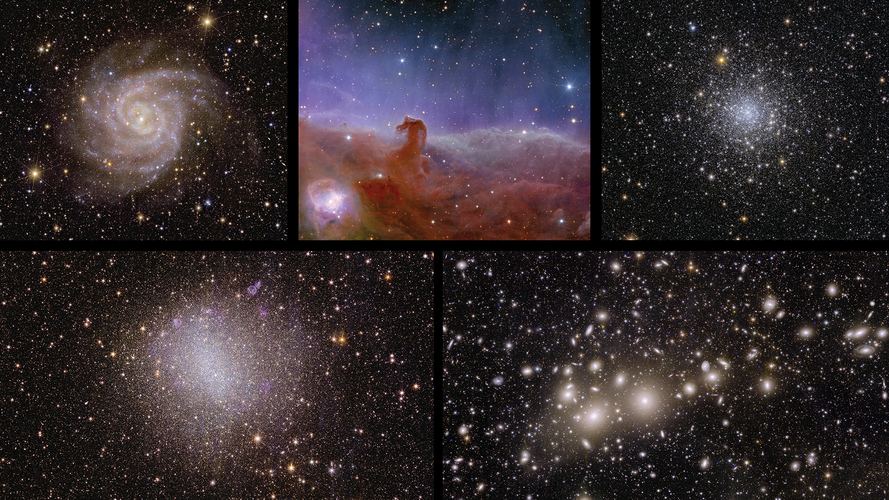Many a space enthusiast first became interested in the topic when they saw some astounding picture taken by one of the world’s great telescopes and began to get a sense of scale of the universe. This author personally remembers the first time he saw Hubble’s Ultra Deep Field – arguably the image that has changed his life more than any other. Given the massive size of the universe, there are always more incredible pictures to be taken, and now humanity has a new tool for that task. Euclid, the European Space Agency’s dark matter/energy hunter, has released its first set of images – and they are absolutely mesmerizing.
One of the most breathtaking is something equivalent to the famous Ultra Deep Field shot. Except in this case, Euclid decided to concentrate on the Perseus Cluster, a group of over 1,000 galaxies located about 240 million light years away from us. It’s one of the most massive known structures in the universe and will undoubtedly shed some insights into the nature of dark matter and how it affects galaxy formation.
But even more impressively, the shot of the cluster also contains around 100,000 additional galaxies in the background, some as far as 10 billion light years away from us. So look again at those little dots in the background – each of those is a galaxy, and while it might not be quite as big as the Milky Way, it is still likely comprised of hundreds of millions of stars. If that doesn’t provide some sense of scale of the universe, it’s unclear what would be able to.
Credit – European Space Agency YouTube Channel
Closer to home, there are some images of more familiar-looking objects. One, known as IC 342, is a spiral galaxy that looks suspiciously like the Milky Way if we were able to see it from the top. It’s also known as the “Hidden Galaxy,” but Euclid’s infrared imaging system makes it pop in the newly released picture.
Globular clusters are also of particular interest in hunting for dark matter, and Euclid’s first crop of images contained one of NGC 6397, the second closest globular cluster to Earth. At only 7800 light years distant, it’s only a short hop in astronomical terms, but Euclid has allowed us to see it as never before by capturing an image of the entire cluster in a single observation – no other telescope developed so far can do that.
But possibly one of the author’s personal favorites of this set of images is a new rendition of one of the most famous structures in all of space. Euclid’s capture of the Horsehead Nebula is stunning and ethereal in its sharpness and quality. Part of Euclid’s mission will be to collect information about Jupiter-sized planets being created in this star-forming region. But taking a fantastic picture is a nice bonus, if for no other reason than the aesthetics.
There are several other fascinating images in the first round, including a type of galaxy called an “irregular dwarf,” which looks more like a diffuse shell of light rather than the spiral or other structures we typically associate with galaxies. ESA also released a video showing a series of captured images, and they probably have more sitting on the telescopes’ data banks as we speak.
However, we might have to wait a little while before they are released. Euclid is currently at the Earth-Sun Lagrange 2 point, and its operators are starting up systems and testing them out. They currently plan on starting full scientific observations in early 2024 and release the data from those observations once a year. With about six years of data expected as part of the mission, expect plenty more stunning photos to come out of this new telescope over the coming years.
Learn More:
ESA – Euclid’s first images: the dazzling edge of darkness
UT – Euclid Reaches L2, Shares its First Test Image
UT – Euclid Recovers From a Navigation Problem and Finds its Guide Stars Again
UT – ESA’s Euclid Mission is Off to Explore the Dark Universe
Lead Image:
Composite image of a series of new pictures from Euclid.
Credit – ESA/Euclid/Euclid Consortium/NASA, image processing by J.-C. Cuillandre (CEA Paris-Saclay), G. Anselmi, CC BY-SA 3.0 IGO

